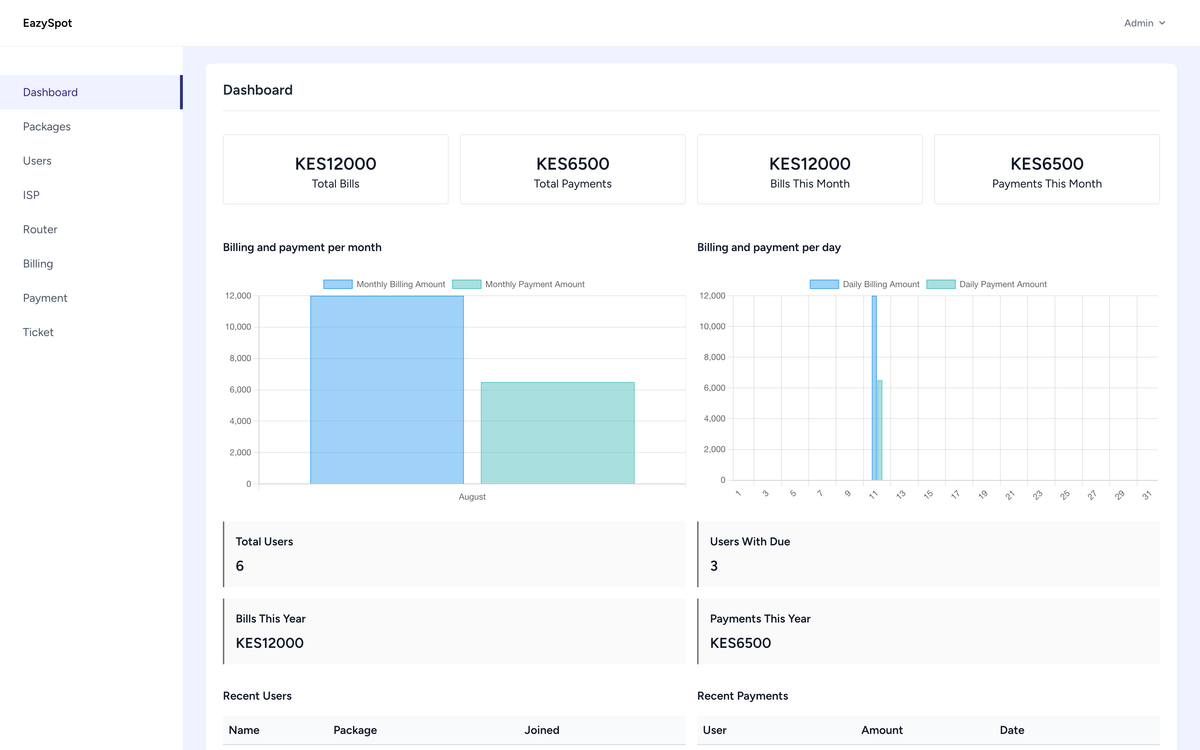EAZYSPOT
ISP Billing System with Hotspot Management
EAZYSPOT
EAZYSPOT is a comprehensive ISP Billing System with integrated hotspot management designed for Internet Service Providers of all sizes. The system automates customer billing, bandwidth allocation, and network management through an intuitive interface.
Features
- Customer Management: Track subscribers, contracts, and service plans
- Automated Billing: Generate and send invoices based on service usage and plans
- Hotspot Management: Centralized control of WiFi hotspots across multiple locations
- Bandwidth Control: Allocate and limit bandwidth based on subscription plans
- Payment Gateway Integration: Process payments through multiple channels
- Network Monitoring: Real-time monitoring of network health and performance
- Reporting Dashboard: Comprehensive analytics on revenue, usage, and network performance
Technologies Used
- Backend: Laravel
- Frontend: HTML, Tailwind css
- Database: MySQL
- Network Integration: MikroTik RouterOS API
- Monitoring: Prometheus and Grafana
- Deployment: Docker containers on Digital Ocean
Development Process
Developing EAZYSPOT required deep understanding of both networking principles and billing systems. I started by researching the pain points of small to medium ISPs and designed a solution that addresses their specific needs.
The integration with networking hardware was particularly challenging, requiring the development of robust APIs to communicate with various router models and configurations. I implemented a modular design that allows the system to work with different hardware vendors while maintaining consistent performance.
Impact
EAZYSPOT has been deployed by several local ISPs, helping them:
- Reduce billing errors by 95%
- Decrease payment collection time by 60%
- Automate previously manual processes
- Gain valuable insights into network usage patterns
- Scale their operations without proportionally increasing administrative overhead
The system has proven particularly valuable for ISPs in areas with limited technical resources, enabling them to operate more efficiently and focus on expanding their service coverage rather than managing administrative tasks.
